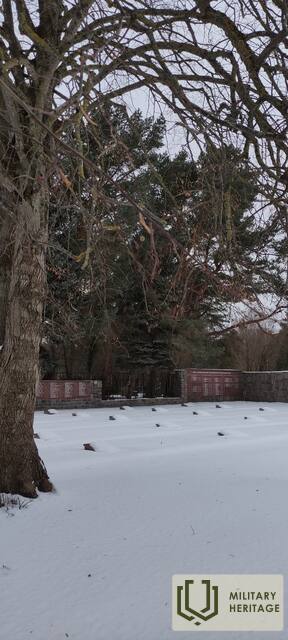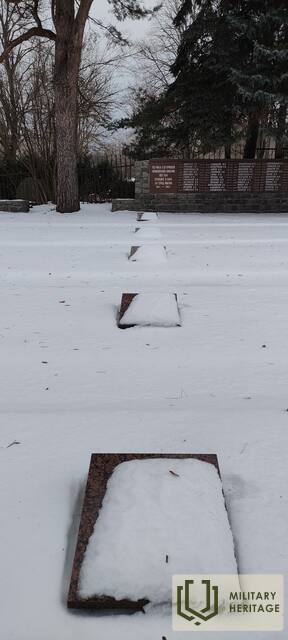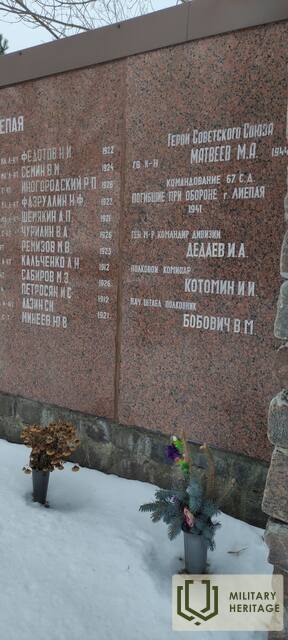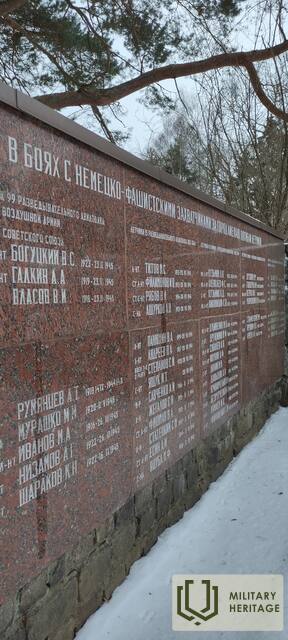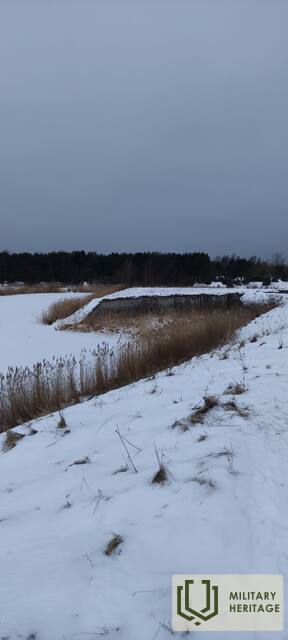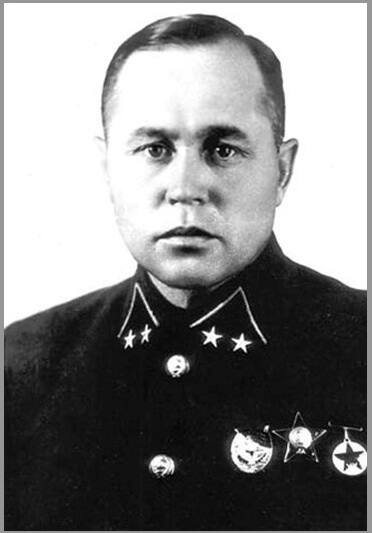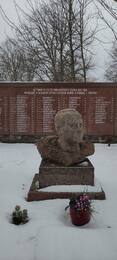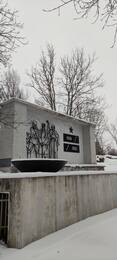Išardyto paminklo Raudonosios armijos 67-osios šaulių divizijos vadui N. Dedajevui istorija
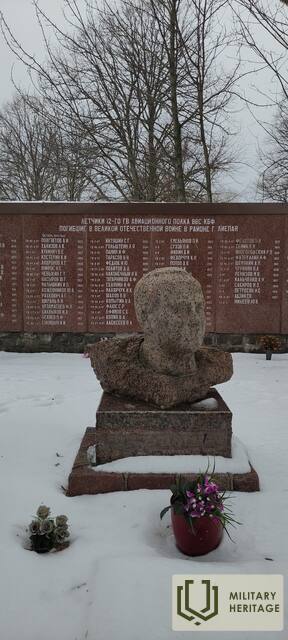
Į šiaurę nuo Pietinio forto yra didžiausios Liepojos kapinės – Centrinės. Pietinėje kapinių dalyje yra Raudonosios armijos kapinės, kuriose perlaidoti Liepojos apylinkėse žuvę sovietų kariai, tarp jų ir 67-osios šaulių divizijos vadas generolas majoras Nikolajus Dedajevas, vadovavęs Liepojos gynybai 1941 m. birželį.
1941 m. birželio 24 d. ankstų rytą Vokietijos armijos 291-osios pėstininkų divizijos 505-asis pėstininkų pulkas, vadovaujamas pulkininko K. Lomeijerio, pradėjo Liepojos tvirtovės Vidus forto puolimą, užėmus Priekulę ir Grobinios miestus. Pirmasis puolimas buvo nesėkmingas, todėl kitas puolimas buvo suplanuotas birželio 25 d. rytą. Tuo metu, į šiaurės vakarus nuo Vidus forto, į 67-osios šaulių divizijos vadovavimo postą, esantį Liepojos tvirtovės artilerijos šaudmenų sandėlyje Nr. 8 (dabar Grīzupes gatvė), pataikė keli vokiečių artilerijos sviediniai ir sužeidė generolą majorą N. Dedajevą. N. Dedajevas mirė Karinio jūrų laivyno ligoninėje ir buvo palaidotas netoliese esančiose brolijos kapinėse. 1947 m. jis buvo perlaidotas Tosmarės kapinėse, o 1977 m. – Centrinėse kapinėse netoli Pietų forto. Nepaisant sovietų nuostolių, birželio 25 d. vokiečių daliniams nepavyko pralaužti Liepojos tvirtovės pylimų. Kovos Liepojoje baigėsi birželio 27 ir 28 d., kai sovietų daliniai bandė prasiveržti šiaurės kryptimi.
Centrinių kapinių pietinėje dalyje, Raudonosios armijos karių brolijos kapinėse, iki 2022 m. stovėjo generolo majoro N. Dedajevo paminklas, tačiau vyriausybės sprendimu jis buvo išardytas.
Vyriausybė remia 69 sovietų ir nacių režimus šlovinančių paminklų išardymą / Straipsnis (lsm.lv)
Latvijos Respublikos teritorijoje esančių sovietinį ir nacistinę režimas šlovinančių objektų, kurie bus išmontuoti, sąrašas (likumi.lv)
Susijusi laiko juosta
Susijusios temos
Susijusios vietos
Liepojos tvirtovės pietinis fortas ir paminklas N. Dedajevui, Raudonosios armijos 67-osios šaulių divizijos vadui
Liepojos tvirtovės Pietinis fortas yra pietvakarinėje Liepojos dalyje, tarp Klaipėdos gatvės ir paplūdimio.
Buvo planuojama pastatyti fortą imperatoriaus Aleksandro III uosto apsaugai iš pietų, du kilometrus nuo pietinės miesto sienos. Fortas turėjo būti tarp Liepojos ežero ir jūros, į vakarus nuo Perkūno upės žiočių, o gelžbetoninius įtvirtinimus sutvirtinti grioviu. Nors įtvirtinimai buvo beveik visiškai baigti, ginkluotė dar nebuvo dislokuota. Pastatyti rūsiai buvo naudojami kaip sandėliai tiek Pirmojo, tiek Antrojo pasaulinio karo metu. XX a. 3-ajame ir 4-ajame dešimtmečiuose įtvirtinimų teritorijoje buvo įsikūrusios įvairios gamyklos. Skirtingai nuo Viduriniojo forto ir Ravelino, Pietinis fortas niekada nedalyvavo kare, nes visuose karuose užpuolikai buvo apgulę Liepojos ežero rytinę pakrantę ir bandė įsiveržti į Liepoją tarp Tosmarės ir Liepojos ežerų.
Į šiaurę nuo Pietinio forto yra didžiausios Liepojos kapinės – Centrinės. Pietinėje kapinių dalyje yra Raudonosios armijos kapinės, kuriose perlaidoti Liepojos apylinkėse žuvę sovietų kariai, tarp jų ir 67-osios šaulių divizijos vadas generolas majoras Nikolajus Dedajevas, vadovavęs Liepojos gynybai 1941 m. birželį.
Liepojos tvirtovės vidurinis fortas ir paminklas Raudonosios armijos kariams
Pavojingiausia imperatoriaus Aleksandro III uosto puolimo kryptis buvo iš rytų tarp Tosmarės ir Liepojos ežerų, kur buvo 2,5 km pločio sausumos sąsiauris. Sausumos juostai ginti buvo pastatyti trys įtvirtinimai. Pietiniame Tosmarės ežero krante buvo kairysis redutas, šiauriniame Liepojos ežero krante – dešinysis redutas, o tarp redutų – Vidurinis fortas. Vidurinis fortas buvo rimčiausias Liepojos tvirtovės įtvirtinimas, tačiau jis nebuvo iki galo užbaigtas, o artilerija buvo dislokuota tik 1908 m.
Būtent Viduriniame forte rimčiausi mūšiai vyko 1915 m. balandį, kai puolė vokiečių kariuomenė, 1919 m. lapkritį per Latvijos armijos mūšius su Vakarų Rusijos išlaisvinimo armija ir 1941 m. birželį, kai Liepoją puolė vokiečių šarvuočių 291-oji pėstininkų divizija.
1941 m. birželį, prasidėjus karo veiksmams tarp nacistinės Vokietijos ir Sovietų Sąjungos, Sovietų armijos Liepojos garnizoną sudarė Liepojos jūrų bazės ir Raudonosios armijos daliniai. Liepojos jūrų bazę sudarė minų tralerių, torpedinių katerių ir povandeninių laivų divizijos, įskaitant buvusius Latvijos karinio jūrų laivyno laivus ir povandeninius laivus. Pakrantės gynybą vykdė 23-ioji ir 27-oji artilerijos baterijos su 130 mm pabūklais ir 18-oji geležinkelio artilerijos baterija su 180 mm pabūklais, kurias dengė dvi Zenito artilerijos divizijos. Bazėje taip pat buvo keli sapierių, remonto, ryšių ir mokymo daliniai, iš viso apie 4000 kareivių, kuriems vadovavo 1-ojo laipsnio kapitonas M. Klevenskis. Iš Raudonosios armijos dalinių garnizoną sudarė 67-oji šaulių divizija (be 114-ojo šaulių pulko ir vienos artilerijos divizijos), kuriai vadovavo generolas majoras N. Dedajevas. Iki karo veiksmų pradžios divizijoje buvo apie 9000 kareivių. Liepojos aerodrome buvo dislokuotas 143-asis naikintuvų aviacijos pulkas su 68 įvairių tipų lėktuvais. Be to, Liepojos rajone veikė 12-asis pasienio apsaugos dalinys.
Mūšiai Liepojos tvirtovėje prasidėjo 1941 m. birželio 24 d. ankstų rytą. Nepaisant sovietų pralaimėjimų, birželio 25 d. vokiečių daliniams nepavyko pralaužti Liepojos tvirtovės pylimo. Kovos Liepojoje baigėsi birželio 27 ir 28 d., kai sovietų daliniai bandė prasiveržti į šiaurę.




